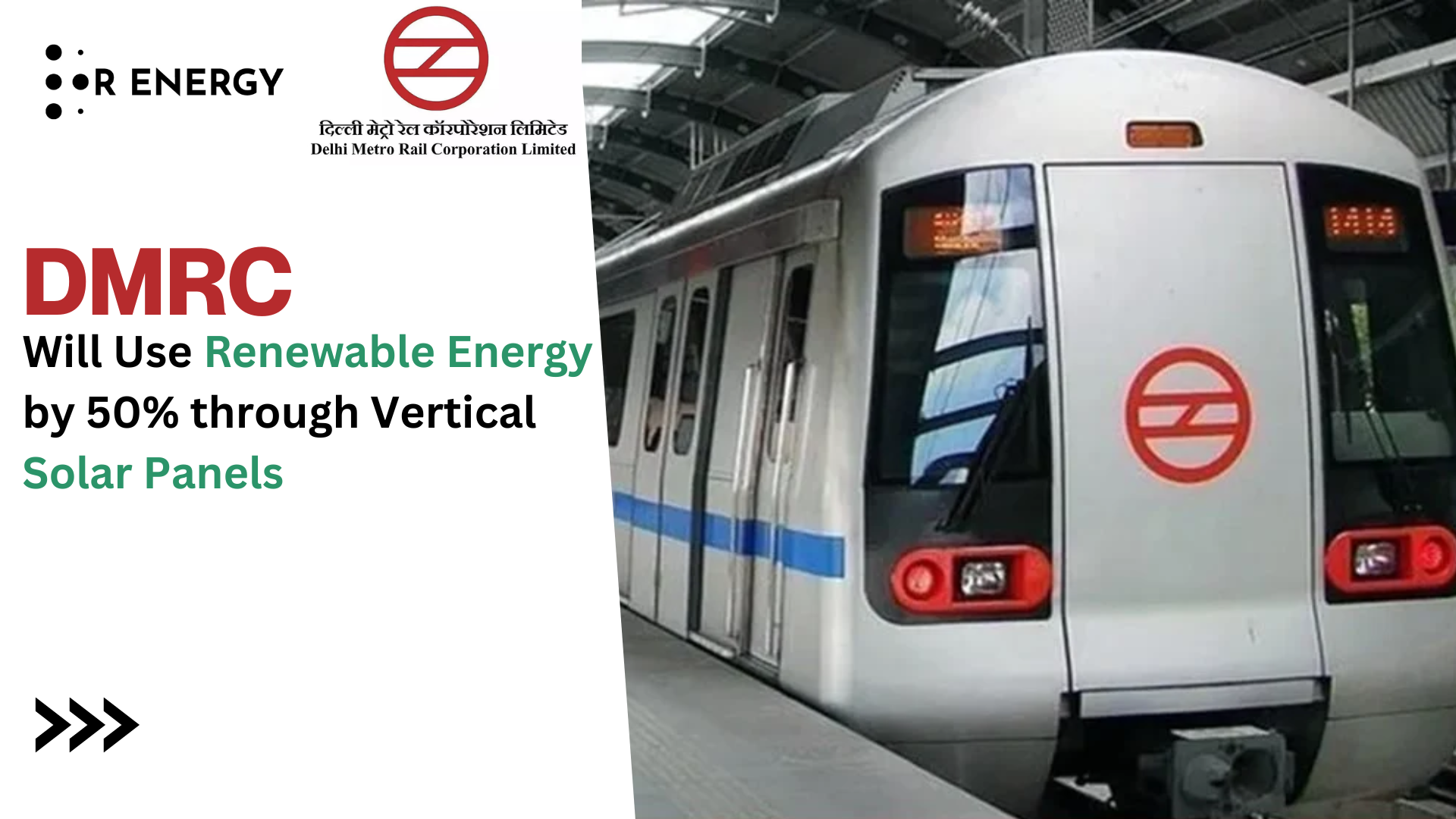Renewable Energy in Delhi Metro
Delhi Metro Rail Corporation (DMRC) is one of the largest mass rapid transit systems in India, with a network spanning over 390 kilometers. By expanding the proportion of renewable energy in its whole power supply, DMRC is dedicated to lowering its carbon impact. By 2031, the metro rail corporation wants to boost the proportion of renewable energy to 50%. Currently, the DMRC gets 35% of its energy from renewable sources. At depots and metro stations, the firm has already installed rooftop solar panels, and it also buys solar energy from an offsite solar facility. In addition, DMRC has planned to install vertical solar panels on each side of viaducts of elevated corridors to meet the energy requirements of the elevated metro corridors with renewable energy.
DMRC’s plan to increase renewable energy
To increase the share of renewable energy, DMRC plans to install vertical solar panels on both DMRC intends to install vertical solar panels on both sides of the viaducts of elevated corridors in order to boost the share of renewable energy. The purpose of the initiative is to use renewable energy to satisfy the energy needs of the elevated metro corridors. In addition to purchasing solar energy from an offsite solar facility, the firm has already placed rooftop solar panels at metro stations and depots. DMRC intends to begin by mounting 100 kWp vertical solar photovoltaic panels on its viaducts. August will mark the start of the vertical solar panel installation process. The Magenta Line segment between Jamia Millia and Okhla Vihar will serve as the project’s initial test site for early analysis and evaluation. After the installation, testing will be conducted to assess the efficacy of the new system. DMRC officials stated that all 27 elevated metro stations under Phase IV’s priority corridors will have the infrastructure to accommodate solar panels.
DMRC’s current use of renewable energy
Currently, 35% of DMRC’s entire energy supply comes from renewable sources. Rewa Solar Power facility in Madhya Pradesh provides about 30% of DMRC’s green energy, along with 4% from rooftop solar panels and 1% from the Ghazipur waste-to-energy facility. On 142 rooftops, Delhi Metro Rail Corporation has installed solar panels with a 50 MWp generating capacity. However, a substantial increase in the use of renewable energy is necessary for DMRC’s objective to boost the share of renewable energy to 50% by 2031.
Regional Rapid Transit System (RRTS) and its plan for solar power
In addition to DMRC, the Regional Rapid Transit System (RRTS) seeks to use solar energy to meet 70% of the corridor’s overall energy needs between Delhi, Ghaziabad, and Meerut. On the station rooftops, there is an estimated 11 MWp of solar power potential, according to the National Capital Region Transport Corporation (NCRTC). These solar panels are expected to produce roughly 10 million solar energy units, which will mostly be used by NCRTC to power auxiliary usage at stations and other structures. Solar panel installation on the RRTS corridor is currently being done. The NCRTC’s solar power plant, which has a total of 54 solar panels installed on the roof of the Ghaziabad receiving sub-station (RSS), has already begun producing electricity. Around 25,000 units of electricity can be generated every year by solar panels at Ghaziabad RSS.
Pilot project
The vertical solar project will be first tested on the Magenta Line section between Jamia Millia and Okhla Vihar with installation work starting in August 2023.
Conclusion
In conclusion, the Delhi Metro Rail Corporation’s choice to use more renewable energy by installing vertical solar panels is a big step in the direction of sustainability and lowering carbon emissions. The effort is not only economically viable but also environmentally friendly, as it is anticipated to result in cost savings over time. This project serves as an illustration of how cutting-edge, environmentally friendly technologies can be used in the transportation industry to tackle climate change. To advance towards a cleaner and greener future, the usage of renewable energy sources should be promoted and copied in other industries as well. This effort is intended to motivate other transportation systems to look into renewable energy sources and help create a sustainable future.
Read More:- Top 7 Renewable Energy Sources That Are Changing The World


